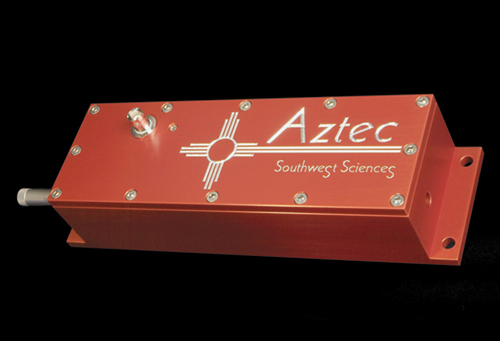Understanding Fire Through Improved Technology
Originating Technology/ NASA Contribution
By studying fire through the science of combustion physics, scientists and researchers from NASA, academia, and private industry find new ways to improve fire safety and increase fuel efficiency. Since gravity’s effect on fire masks many details that occur during the combustion process, scientists can gain a better understanding of fire by studying it in microgravity.
Researchers from NASA’s Microgravity Combustion pro gram at Glenn Research Center use drop towers, which are long, vertical shafts, to study how fire behaves in microgravity. Experiment packages are dropped from the top of the tower, enabling them to achieve microgravity through freefall. As part of their work to measure fire behaviors, the NASA researchers needed a laser capable of high sensitivity trace gas detection at unique wavelengths. While diode lasers are suitable for tests in the drop towers because they are rugged, small, and low power, existing laser models did not have the capability to produce the necessary range of wavelengths.
Partnership
NASA granted Southwest Sciences, Inc., of Santa Fe, New Mexico, a Phase II Small Business Innovation Research (SBIR) contract to develop a diode laser that could meet the Microgravity Combustion program’s very specific measurement requirements. As a result, the company developed a broadly tunable external cavity diode laser that offers unprecedented wavelength agility and tuning speed.
Although the Aztec laser is not the first external cavity diode laser, its increased capabilities mark a tremendous leap in the technology. Dr. Nancy Piltch, a NASA optical physicist for the Microgravity Combustion program, described the technology advance as “equivalent to switching from mechanical to electronic tuning.”
Product Outcome
Aztec™ is the commercial name for Southwest Sciences’ laser. The laser has coarse tuning ranges of 10 nanometers (nm) to 30 nm at wavelengths ranging from 630 nm to 2,300 nm, making it the only commercially available external cavity diode laser with wavelengths beyond 1,650 nm. The laser’s high-speed tuning in both coarse and fine wavelength regimes allows for increased trace gas detection. With the automated coarse tuning option, the Aztec sweeps through its wavelength range in less than 1 millisecond. While some diode lasers can only detect one type, or species, of a trace gas, the Aztec’s broad wavelength tuning provides access to multiple trace gas species.
The Aztec has a wide range of applications for both NASA and commercial users, from protecting astronauts in space to improving combustion processes on Earth. It may serve as a new tool for planetary exploration, as it can detect a wide range of multiple gas species in planetary atmospheres. The laser could optically detect gaseous indicators of incipient fires on the International Space Station and Space Shuttle, as well as detect low concentrations of potentially toxic gases in spacecraft crew habitats. The laser could also provide more accurate fire detection in aircraft cargo compartments. Since the Aztec can detect several gases that only evolve during an actual fire, its implementation could reduce the large number of commercial aircraft landings that currently occur due to false alarms. Other applications include environmental and industrial process monitoring.
Aztec™ is a trademark of Southwest Sciences, Inc.

The Aztec™ laser’s detection capabilities may lead to improved fire safety both on Earth and aboard the Space Shuttle.













